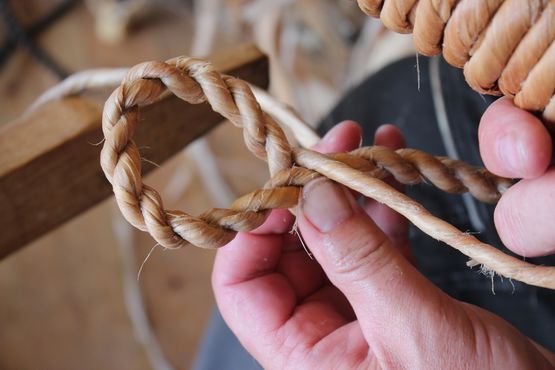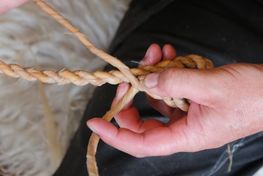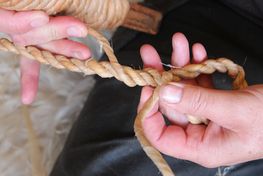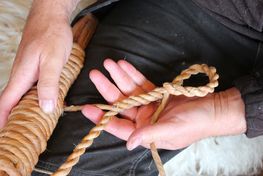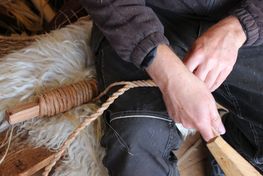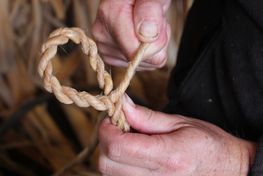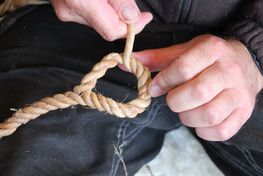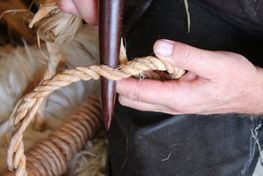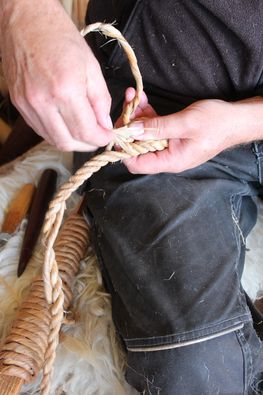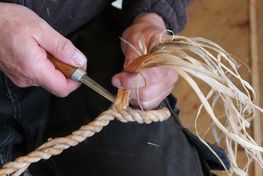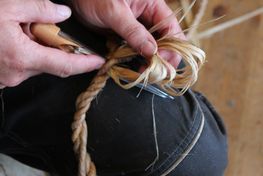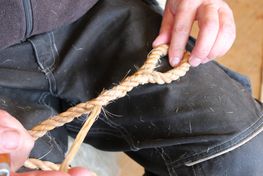Carsten began making the eye by making a loop in the required size. He then took the two cords of the rope and held one above and one below the rope, just under the base of the eye. He took the cord that lay above and began to lay it in place beneath the eye, increasing the rope in thickness from 2 to 3-ply. When he had worked ca. 10cm down from the eye, he tucked the stick with the remaining cord under his leg and began to work on the eye.
The eye is made is made in the same manner, only this time the third cord was laid around the length of the eye, rather than the along the length of the other rope. He continued laying the cords together until he had worked his way around to the base of the eye. He measured the length of the remaining cord, and cut it off at ca. 30cm length.
Using a pointed wooden tool, he then worked open a hole at the base of the eye, and inserted the remaining length of cord through the hole. He then thinned out the length of cord by cutting off some of the remaining strands of bast. He then spliced the loose end into the rope under the eye, using a fid (a concave metal point), which opens a gap in the bast and allows him to pass the ends of the fibres through. When he had worked ca. 10-15cm down from the base of the eye, the ends of the fibres were cut off.
Carsten commented about how the layer of ox tallow seems to have made the rope easier to work with. He’s also quick to point out that there’s no ethnographic parallel from the Nordic ropemaking tradition for such a practice, but that his own understanding of the materials from a craftsmans perspective made it seem like a logical step. He told about the experience he had had with lime bast bolt rope on a wool sail: the wool had been treated with tallow and some of this naturally rubbed off onto the surrounding bolt rope. The lime bast rope which was in contact with tallow lasted much longer than normal, as the tallow had hindered the breaking down of the fibres.
As to what impact the tallow will have on the Gislinge Boat’s rigging, we’ll just have to wait and see. But it’s another interesting example of how the craftsman’s innate understanding of his materials and their performance can push the way in which we use them in new directions.
Have any of you tried giving lime bast rope a layer of tallow or any other type of treatment?
Next up, finishing the forestay…
